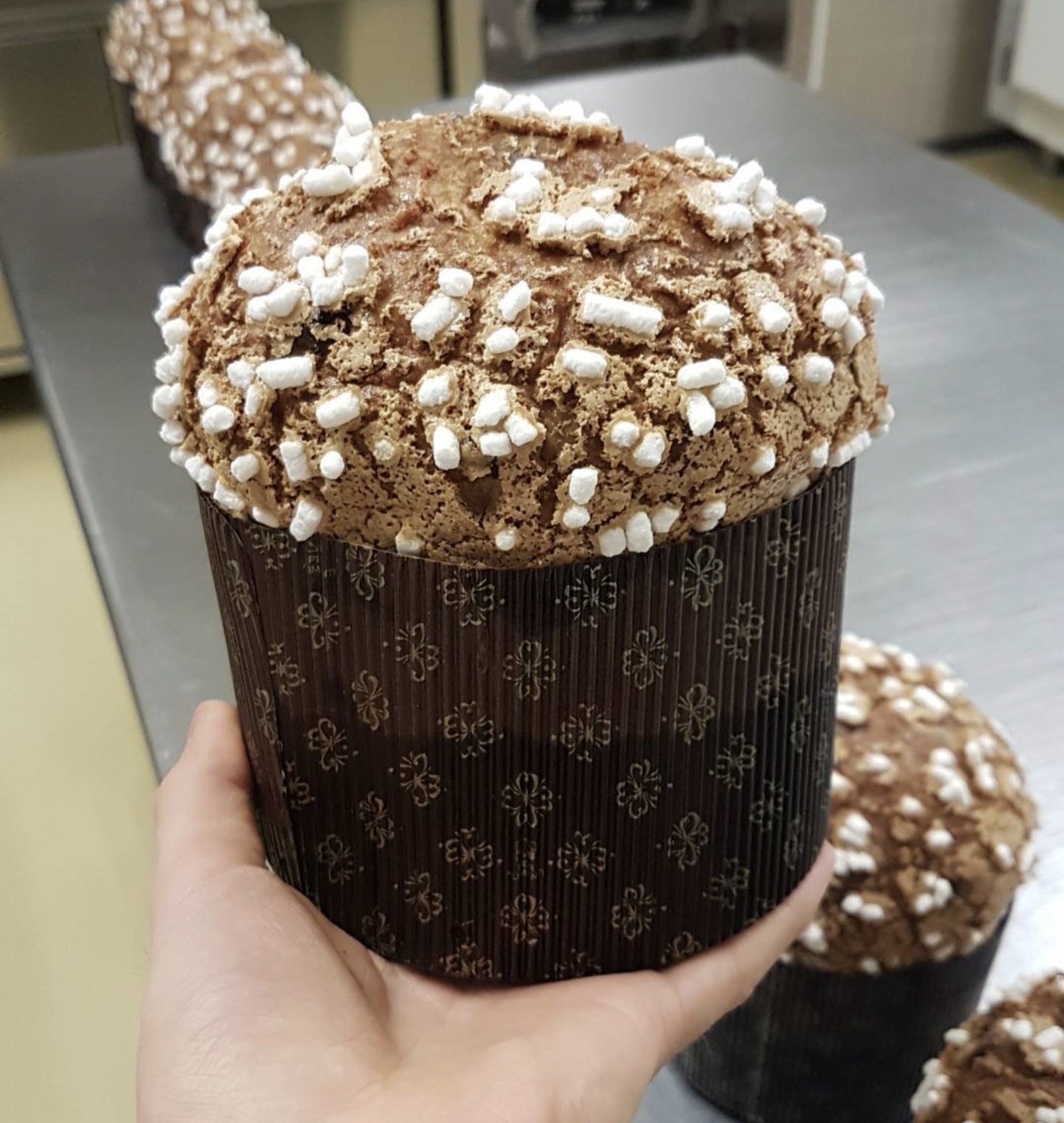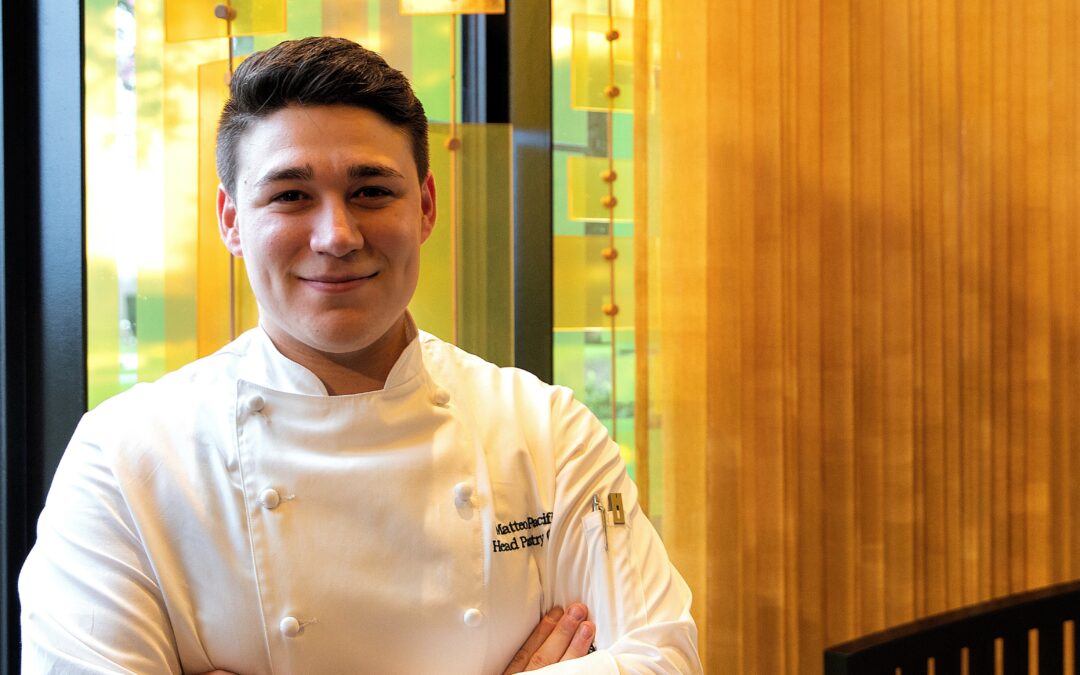Pastry Chef Matteo Pacifici is an Italian pastry chef who has made the fascinating streets of London his home, working at The Grove Hotel. With over 10 years of experience in the world of pastry, he has had the privilege of collaborating with renowned Italian pastry masters, learning from their skills thus contributing to his professional growth. Matteo’s culinary journey has led him to live in the heart of England for the past 6 years, enriching him with new influences and perspectives. His passion for pastry goes beyond daily routines; it’s a fusion of creativity, talent, and innovation that he strives to incorporate into every sweet creation.
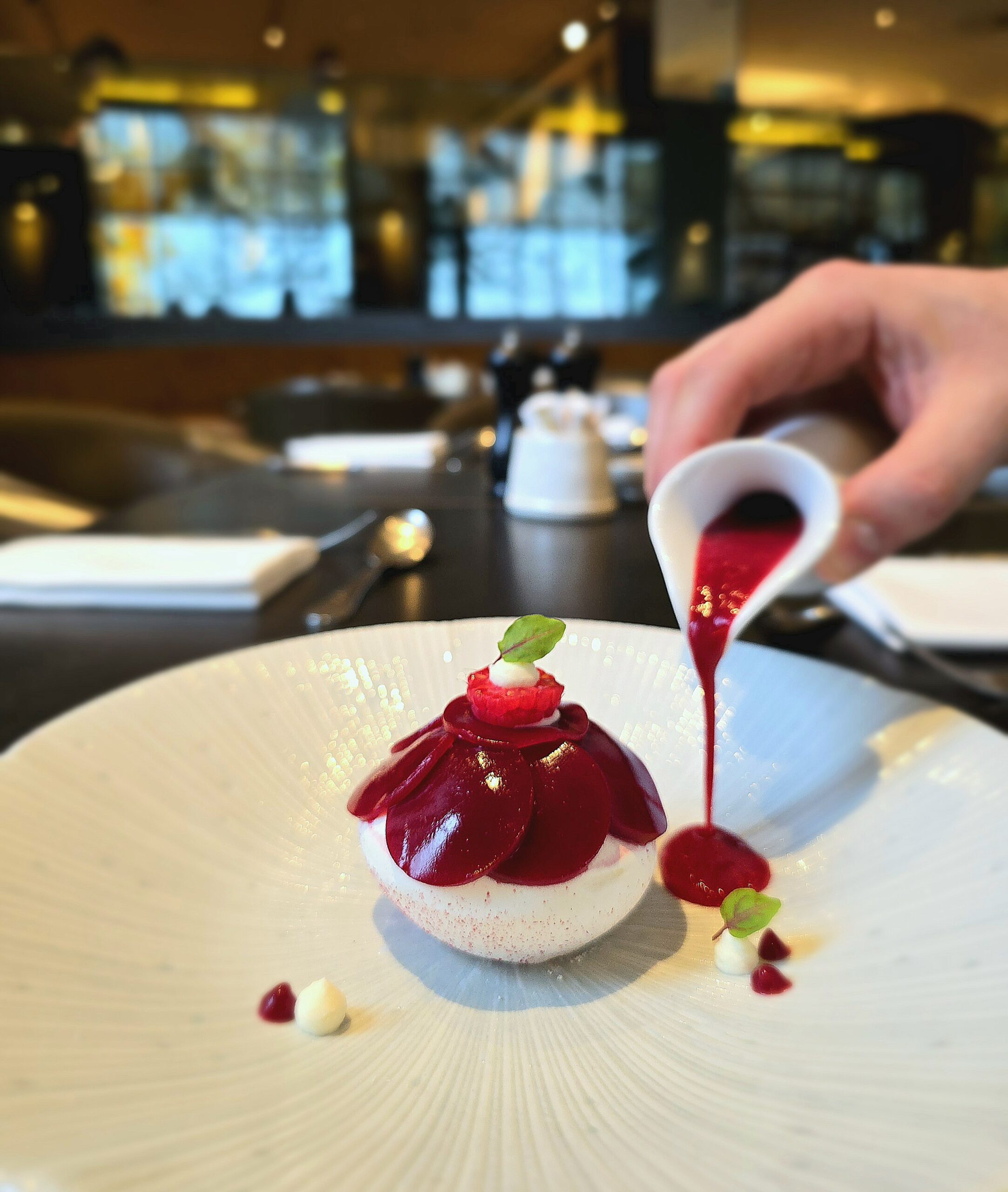
Raspberry Pavlova
He deeply respects Italian culinary tradition, considering it the root of his inspiration. At the same time, he always pushes beyond, seeking new approaches and innovative concepts. His commitment extends beyond just excellence in dessert preparation; it encompasses respect for the ingredients he works with. Chef Matteo values the quality and authenticity of the ingredients, considering them the fundamental basis of his creations. Every dessert he crafts tells a story, uniting the past and present in a unique gustatory experience.
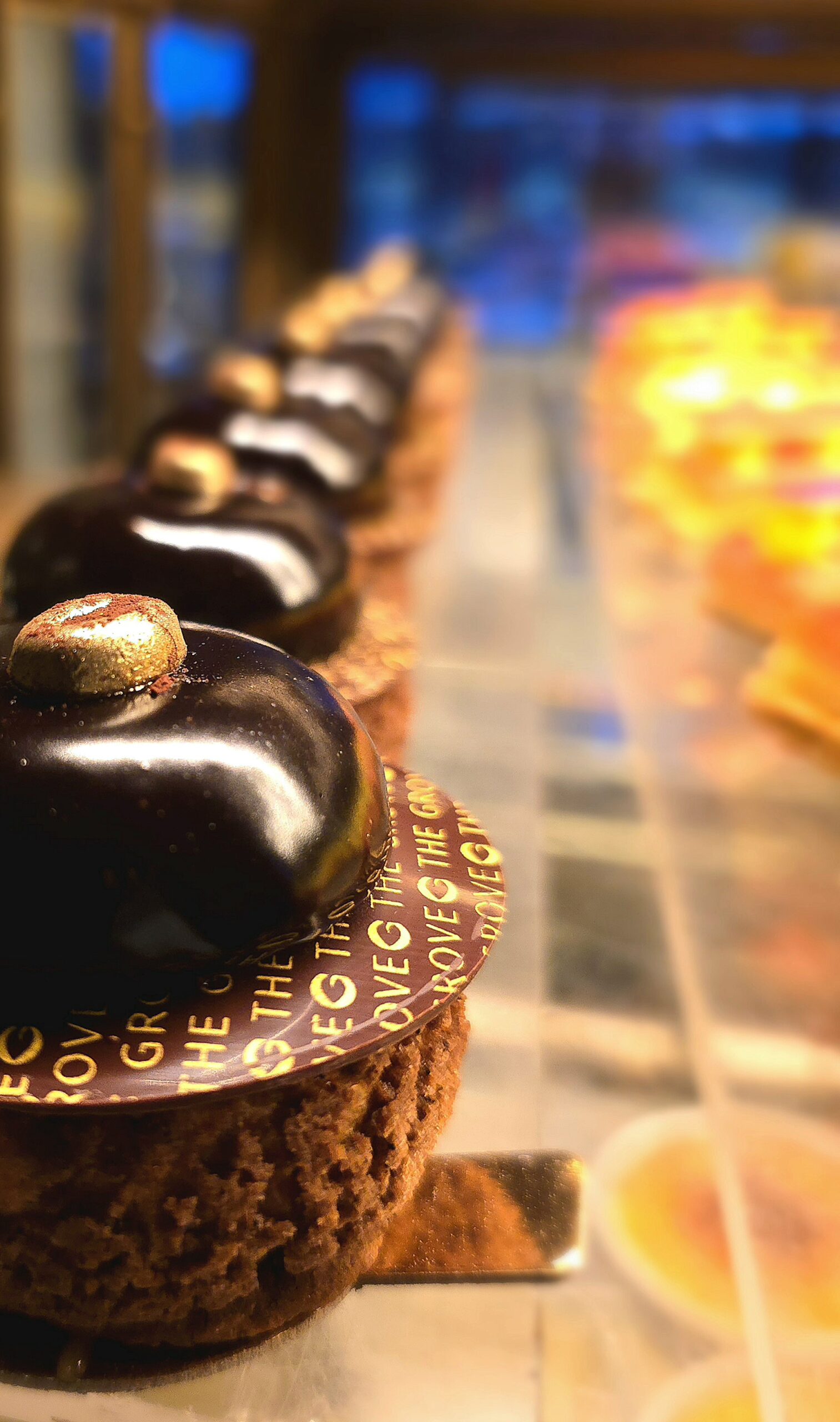
tiramisu choux
What inspired you to become a pastry chef? You’ve been in the industry for quite some time. Would you have done anything differently when first starting out?
I found my inspiration for becoming a pastry chef through hands-on experience at my parents’ restaurant in Italy. Assigned to the pastry station, I embraced the challenge of maintaining control during busy services. Although not everyone was fond of the demanding nature of the pastry section, it was precisely within those intense moments that my love for pastry blossomed.
Working diligently in the midst of a bustling restaurant environment allowed me to explore my creativity by experimenting with new recipes. An initial resistance to the challenging nature of the pastry station transformed into a deep passion for crafting delightful and innovative desserts. This pivotal experience not only ignited my love for pastry arts but also instilled in me the resilience and dedication necessary for success in the culinary world.
Looking back, I am grateful for the foundation laid during those formative years in my parents’ restaurant. The challenges and rewards of working in the pastry section have undoubtedly shaped my culinary journey, and I carry that inspiration with me as I continue to create memorable and delicious desserts.

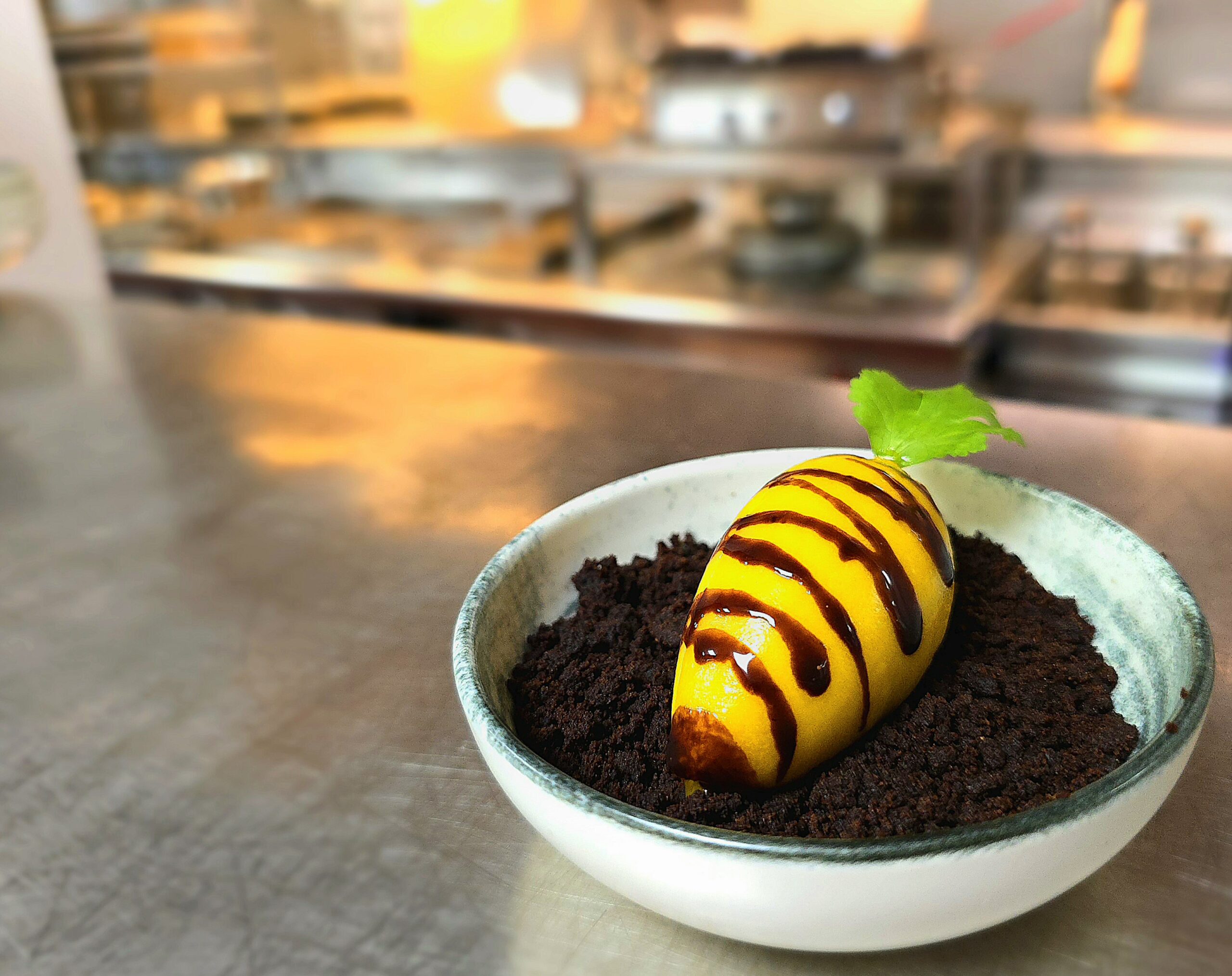
Carrot palate cleanser
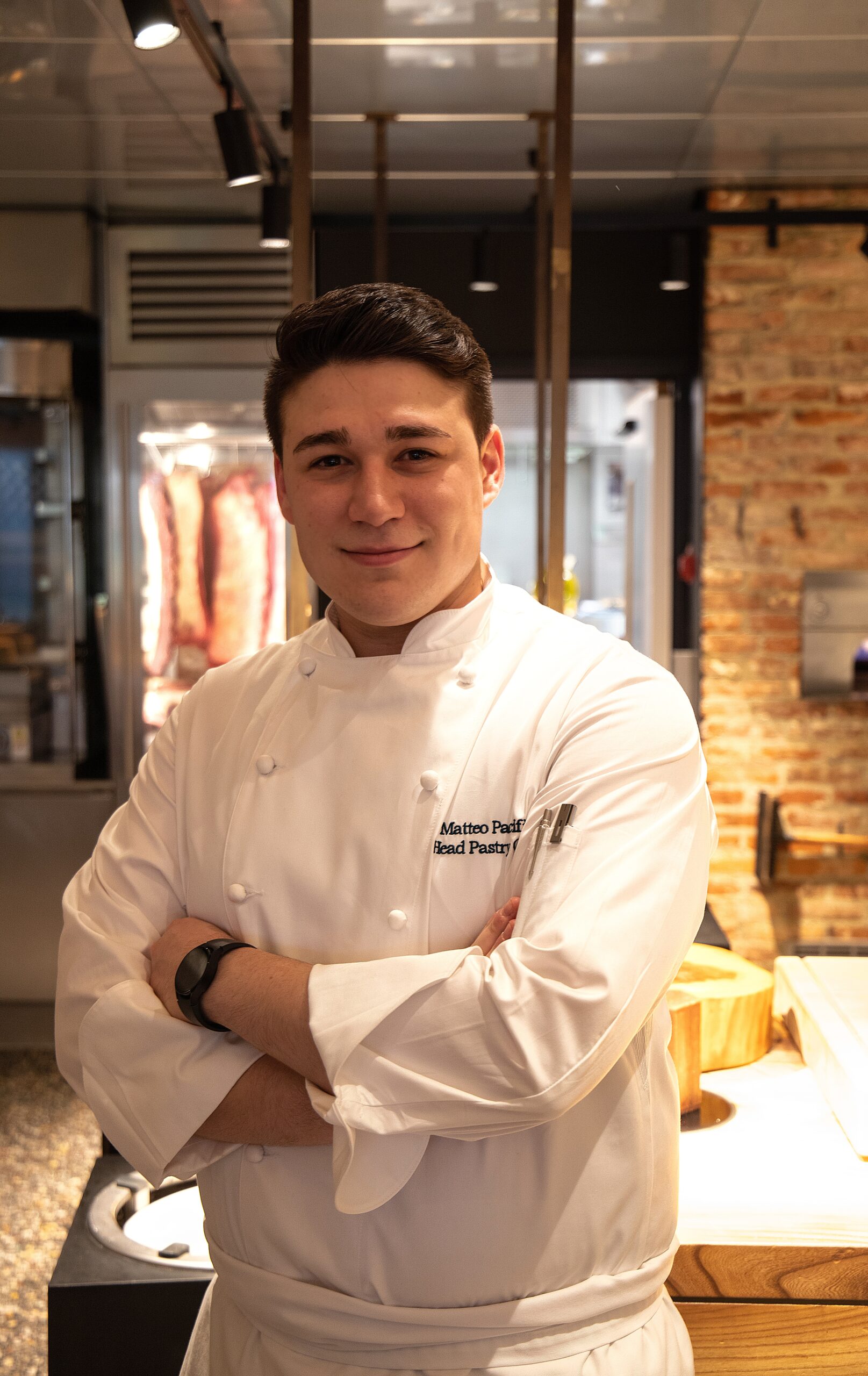
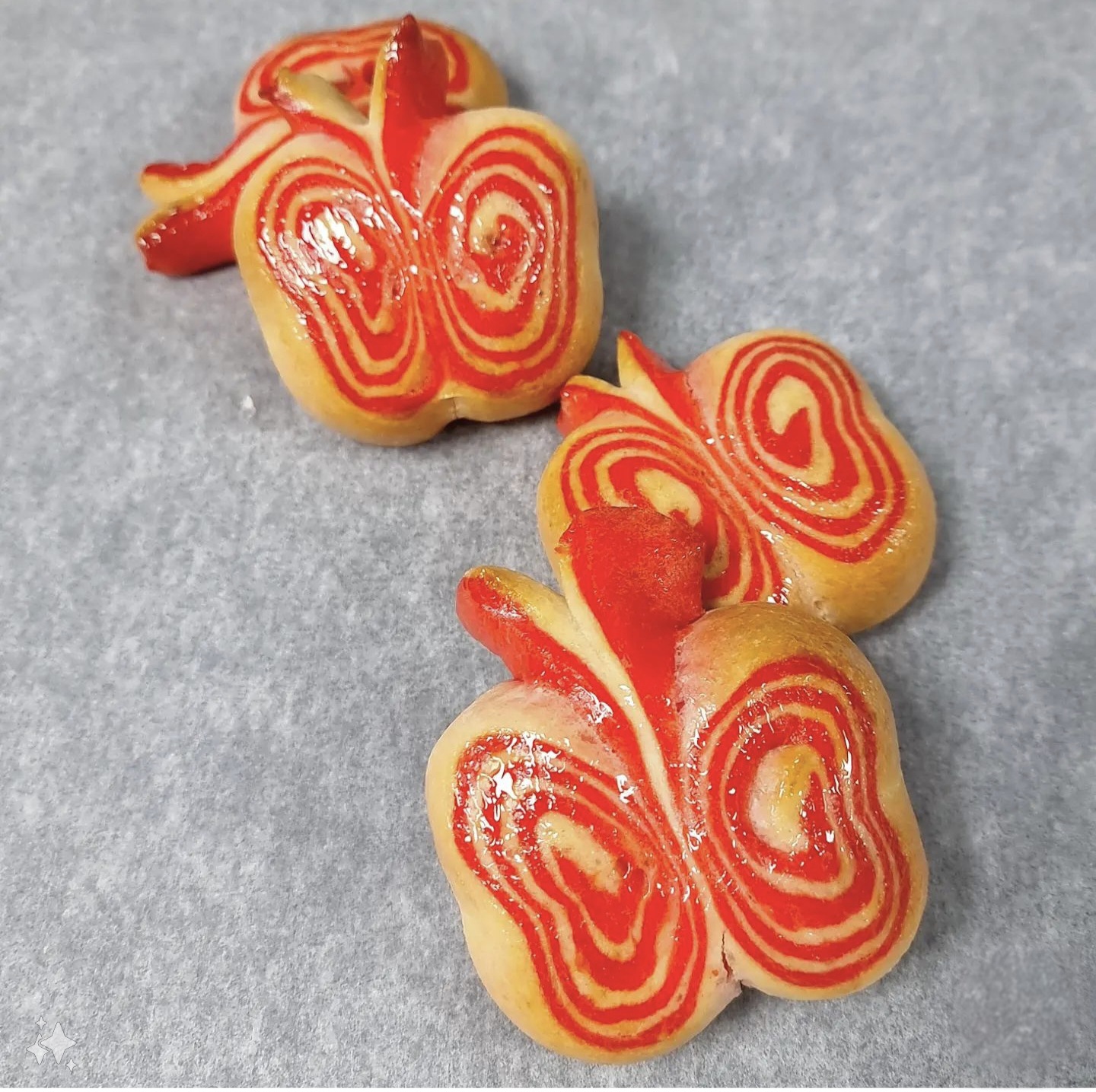
strawberry-and-cream-brioche-butterfly
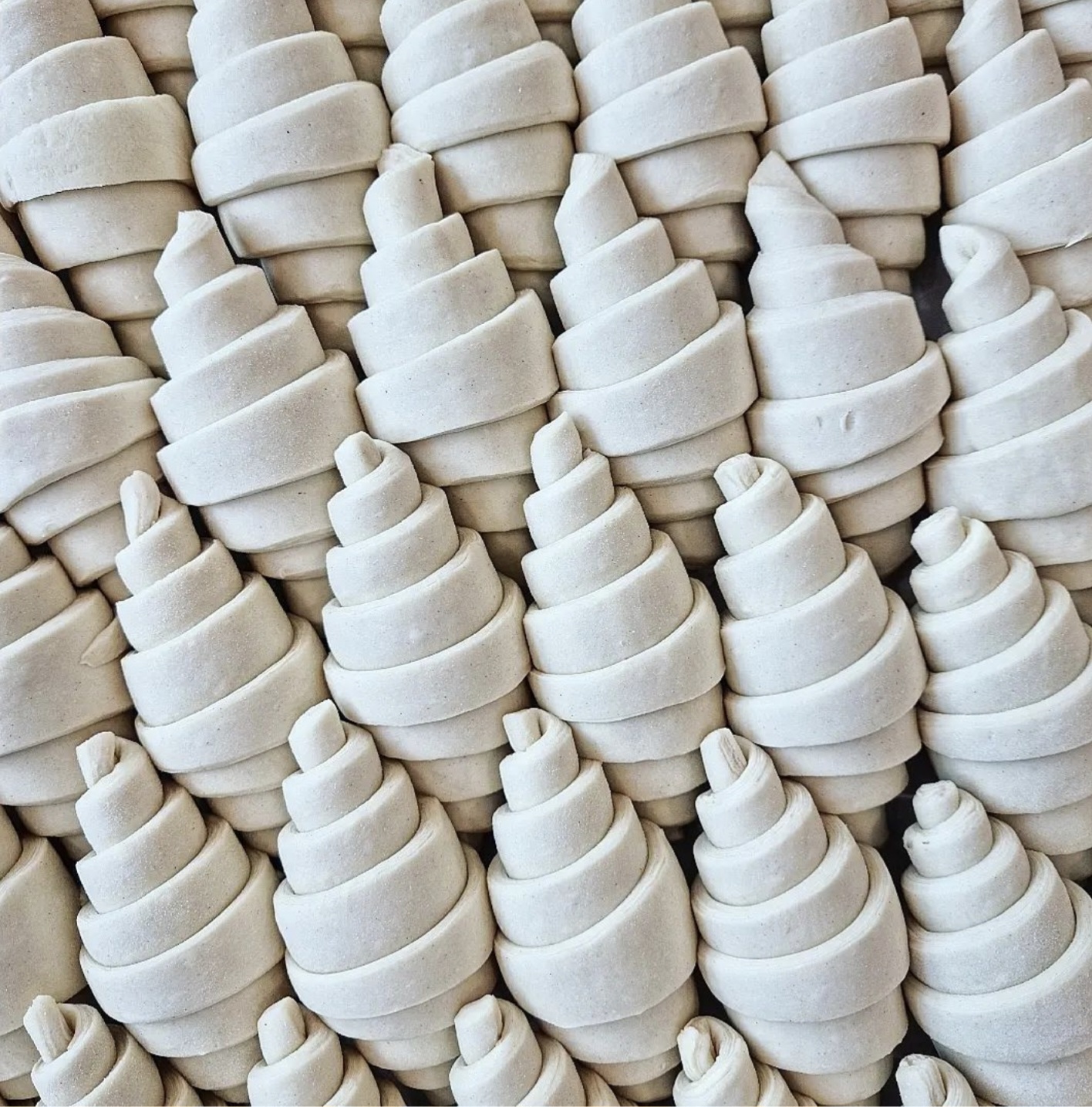
Butter Croissants
The topic of local food, from smaller, specialized and personally known producers, is becoming more important. What are some of your local partners from whom you source?
The key feature of my creations lies in the meticulous balance between flavors, textures, and visual appeal. I strive to create desserts that not only tantalize the taste buds but also engage the senses with a harmonious blend of colors, shapes, and intricate details. Each of my creations is a unique masterpiece, showcasing my dedication to innovation, quality ingredients, and a deep understanding of the art and science of pastry. Whether it’s the perfect combination of ingredients or the artistic presentation, I aim to leave a lasting impression on the palate and create a memorable experience for anyone indulging in my desserts.
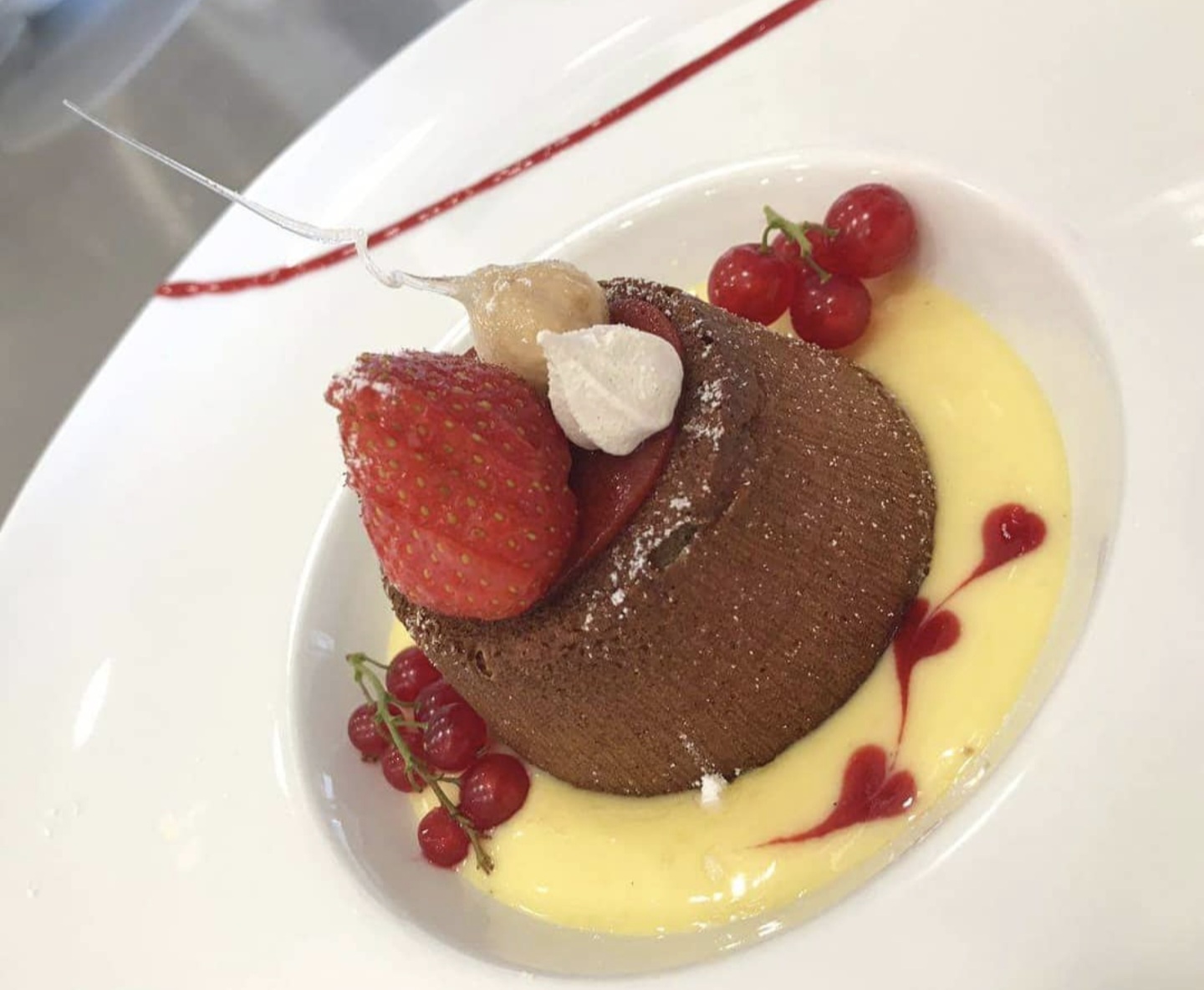
chocolate souffle
What are the most important considerations when crafting your menu?
When crafting my menu, several key considerations guide my choices. First and foremost, I prioritize the use of high-quality, seasonal ingredients to ensure freshness and flavor authenticity. Creativity plays a crucial role, as I aim to offer a diverse range of desserts that showcase unique and innovative concepts.Additionally, I pay close attention to the balance of flavors and textures across the menu, ensuring a delightful variety that caters to different preferences. Dietary considerations, such as accommodating allergies or providing options for those with specific dietary needs, are also essential.
I believe in maintaining a harmonious blend of classic favorites and exciting new creations, offering a well-rounded experience for my customers. Ultimately, my goal is to create a menu that not only reflects my passion for pastry but also provides a memorable and satisfying journey for those who indulge in my confections.
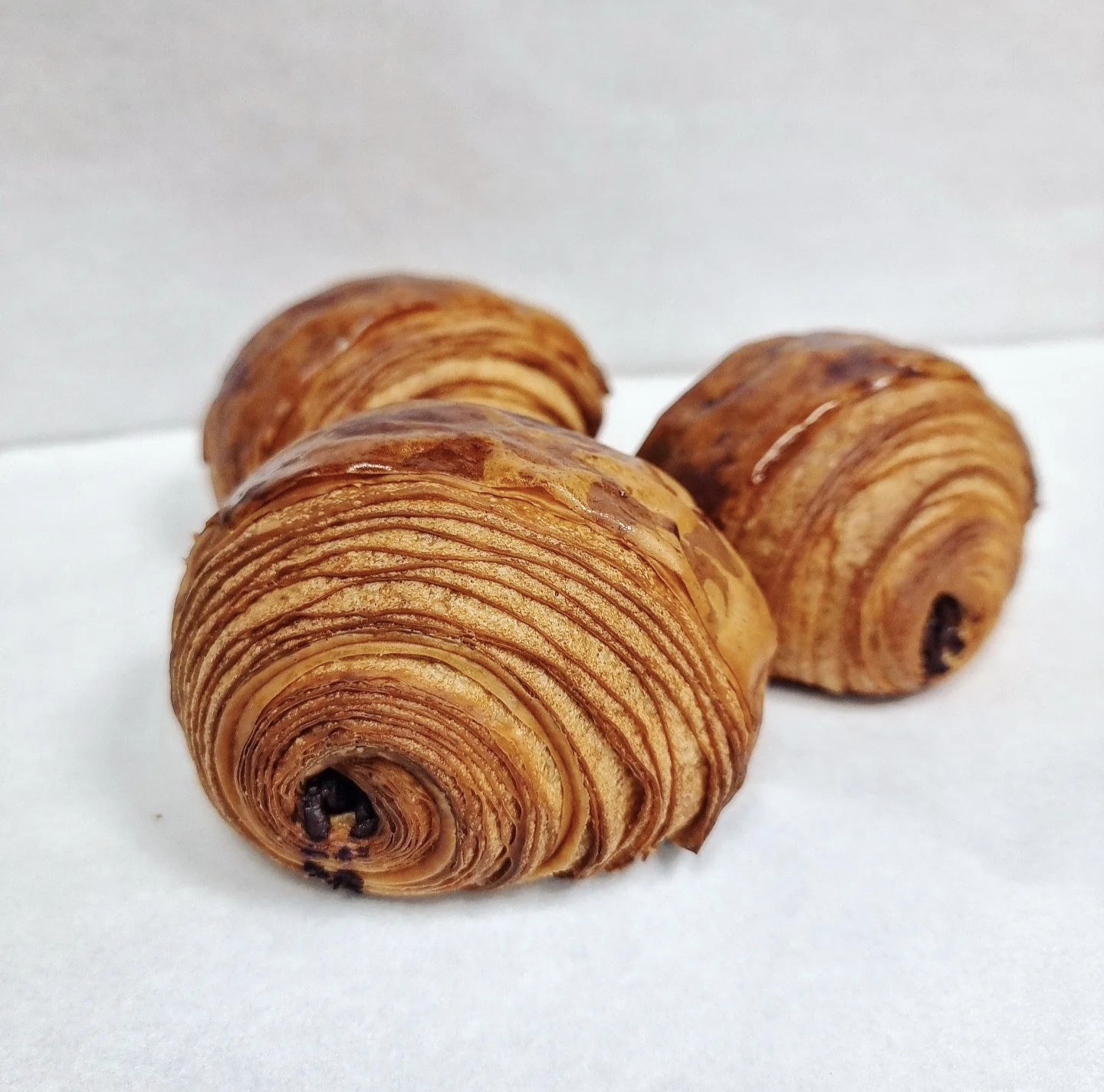
Have you ever considered being a vegan chef? How practical is it being a pastry chef?
While I haven’t exclusively pursued the title of a vegan chef, I am always open to incorporating diverse culinary approaches into my repertoire. The concept of veganism is intriguing, and I believe it has significant potential in the world of pastry. It presents unique challenges, particularly in achieving the same level of texture and flavor without traditional dairy and egg components. In practical terms, being a vegan pastry chef requires a deep understanding of alternative ingredients and innovative techniques.
I’ve experimented with plant-based substitutes to create desserts that not only meet the expectations of vegan customers but also resonate with all dessert enthusiasts. It’s a rewarding challenge that aligns with the growing demand for plant-based options in the culinary world. Adopting a vegan approach in pastry requires careful consideration of ingredient sourcing, flavor balance, and presentation. While it may present challenges, the increasing interest in veganism and plant-based diets makes it a practical and rewarding avenue for a pastry chef looking to expand their culinary horizons.
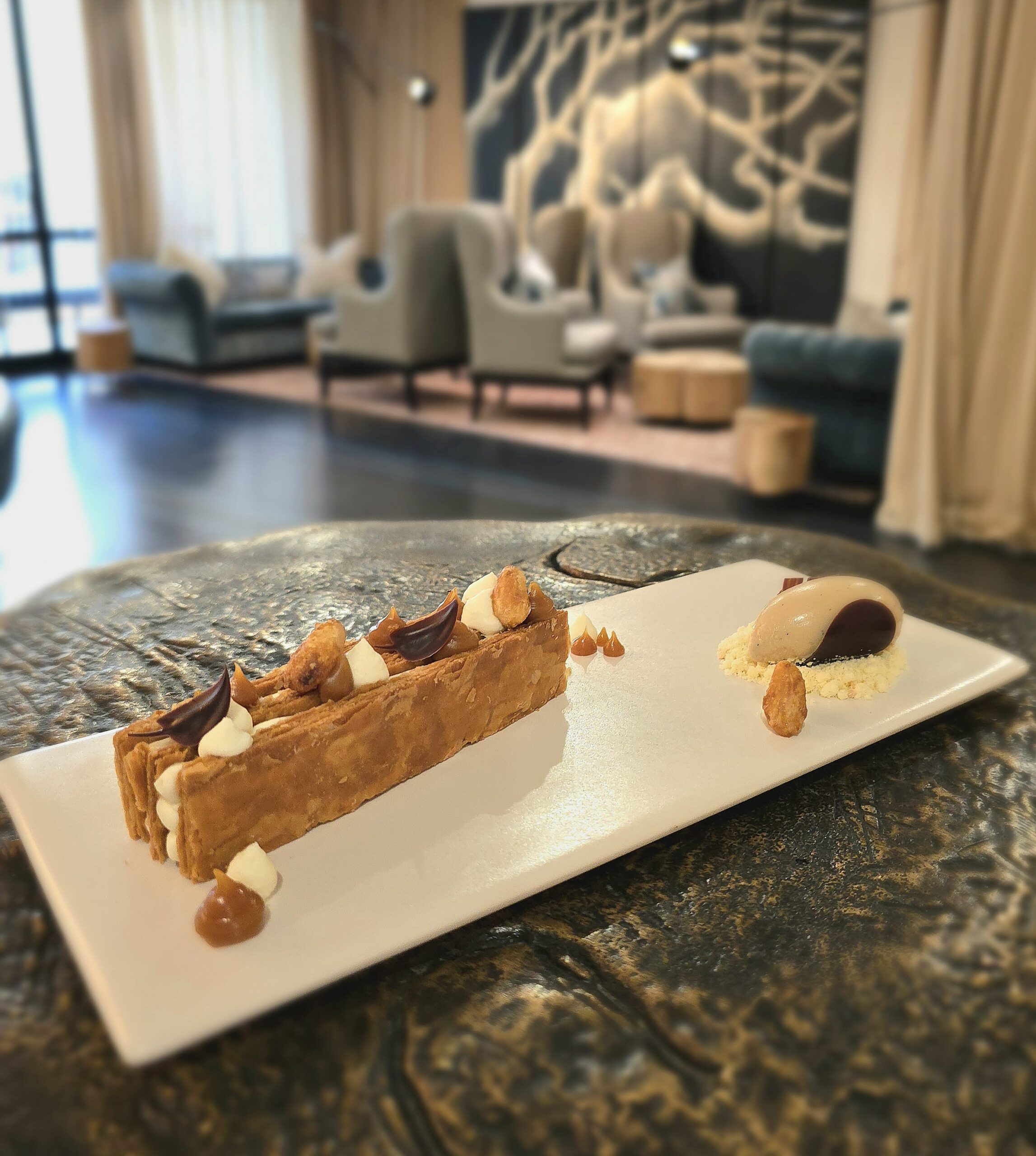
Almond praline millefeuille
What’s your signature dish?
My signature dish, ‘Passione per il Cioccolato,’ is a harmonious symphony of flavors and textures that aims to captivate the senses. This decadent creation features a luscious combination of babà, mango compote, chocolate mousse, passion fruit jelly, chocolate sponge, and a refreshing tropical sorbet.The babà provides a delicate and moist base, while the mango compote adds a tropical sweetness that beautifully complements the richness of the chocolate mousse. The interplay of textures continues with the chocolate sponge, offering a light and airy contrast.
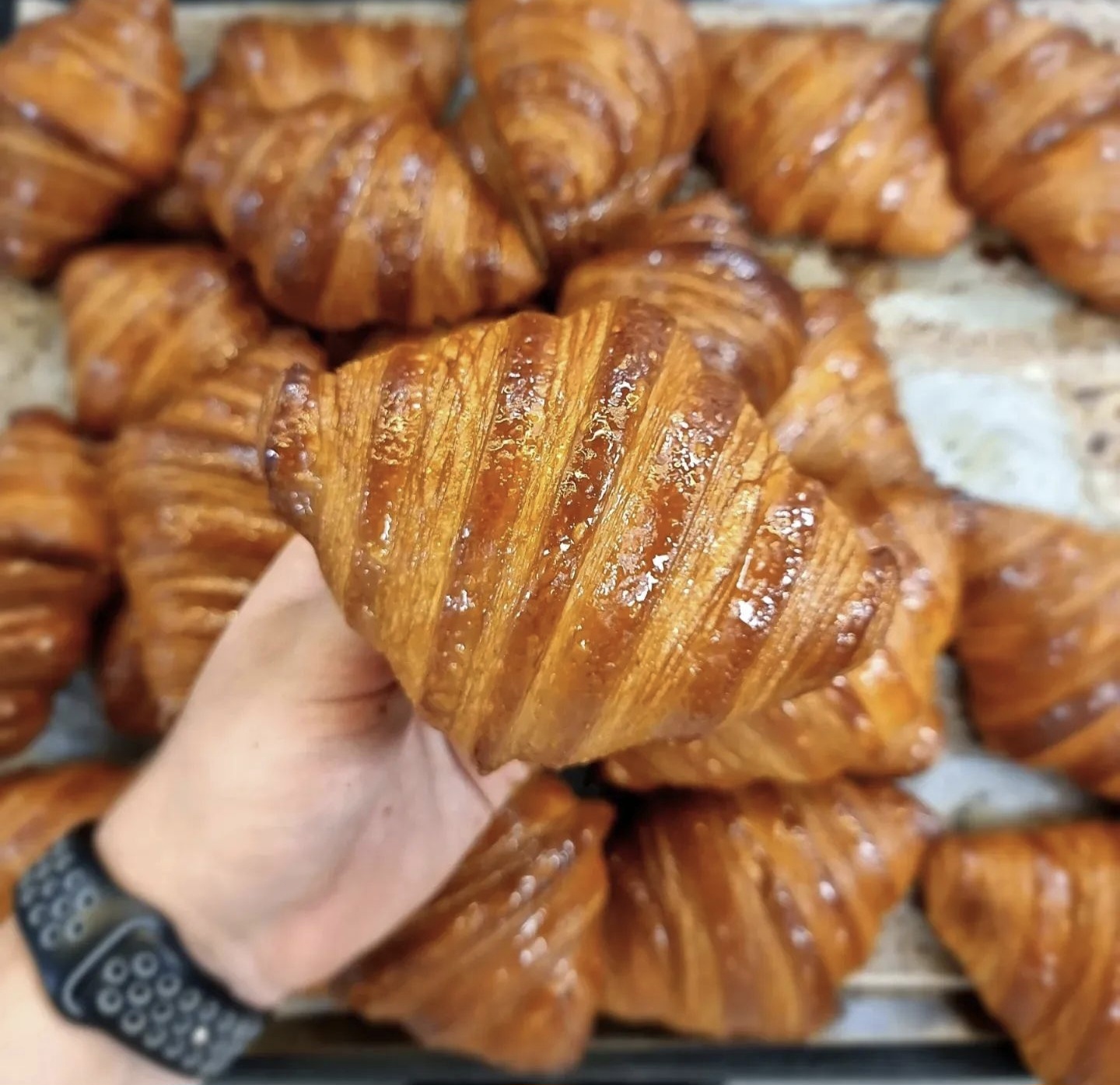
The passion fruit jelly introduces a zesty and vibrant note, enhancing the overall flavor profile. What makes ‘Passione per il Cioccolato’ stand out is not just the combination of high-quality ingredients but also the meticulous layering and balance of each component. It’s a dish that reflects my passion for creating indulgent yet well-rounded desserts, leaving a lasting impression on those who experience its symphony of flavors.
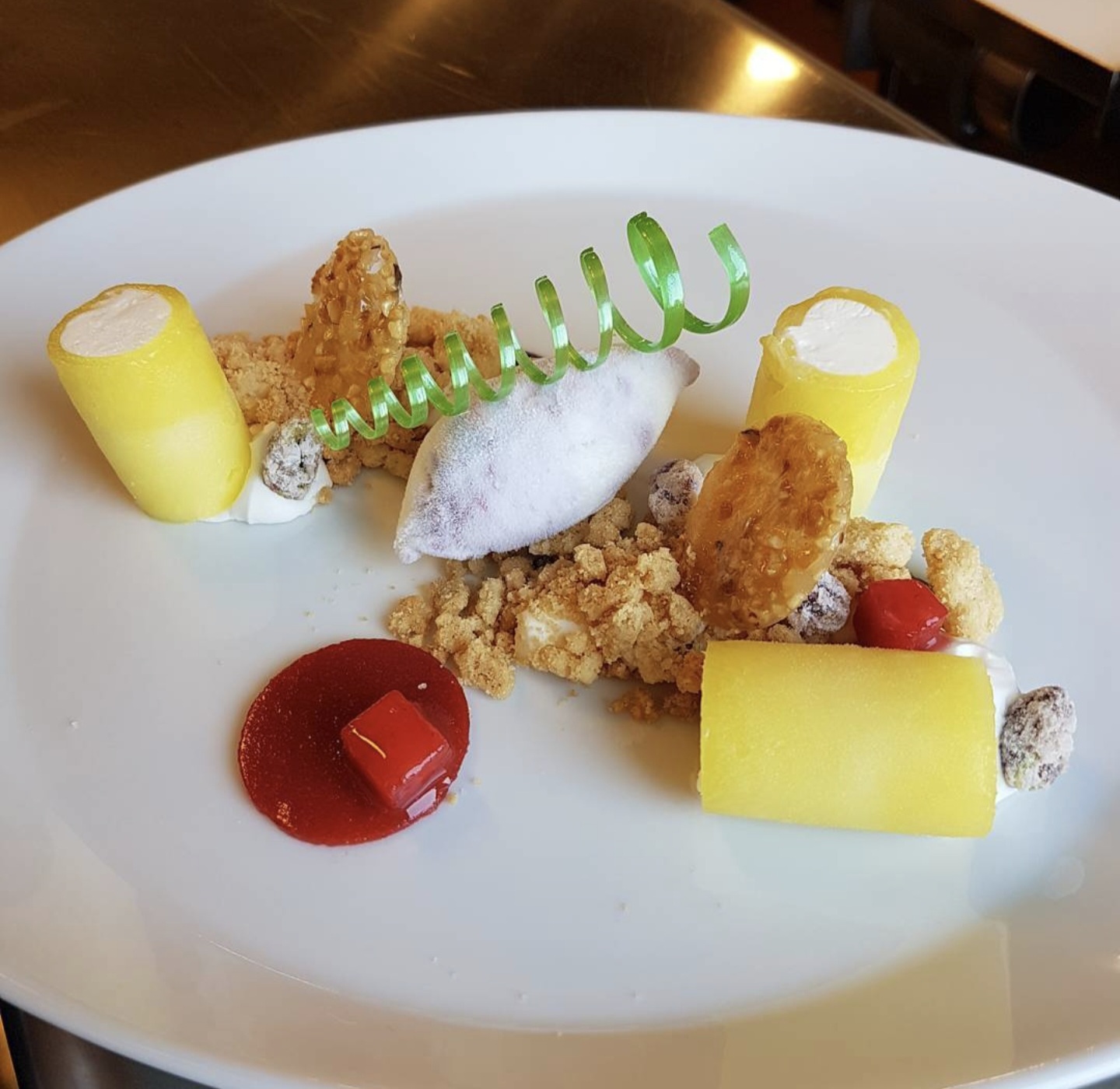
pineapple pacchero
To effectively communicate the approach of innovative, sustainable, plant-based food in the culinary world, transparency, education, and engagement are crucial.
- Transparency: Clearly communicate the commitment to sustainability and plant-based choices. This can include details about sourcing practices, the use of eco-friendly packaging, and efforts to minimize the environmental impact.
- Education: Provide information to diners, staff, and the community about the benefits of a plant-based diet. This could involve menu descriptions explaining the environmental advantages, nutritional benefits, and the positive impact on animal welfare.
- Engagement: Actively engage with customers and the community through various channels. Social media is an effective platform to share behind-the-scenes stories, showcase new plant-based creations, and communicate the restaurant’s or chef’s dedication to sustainability.
- Collaboration: Collaborate with local farmers, suppliers, and organizations that share similar values. Highlighting local, seasonal, and sustainably sourced ingredients fosters a sense of community and supports the broader sustainable food movement.
- Creative Marketing: Use creative and visually appealing marketing strategies to make plant-based options enticing to a broad audience. Showcase the innovation and culinary artistry involved in creating unique, flavorful plant-based dishes.
- Customer Feedback: Encourage and welcome customer feedback. This not only helps in refining offerings but also builds a sense of community and inclusivity. Consider incorporating customer favorites and suggestions into the regular menu.
- Partnerships: Collaborate with like-minded businesses or chefs to host events, workshops, or pop-up experiences that focus on innovative and sustainable plant-based cuisine. This can attract new audiences and generate positive publicity.
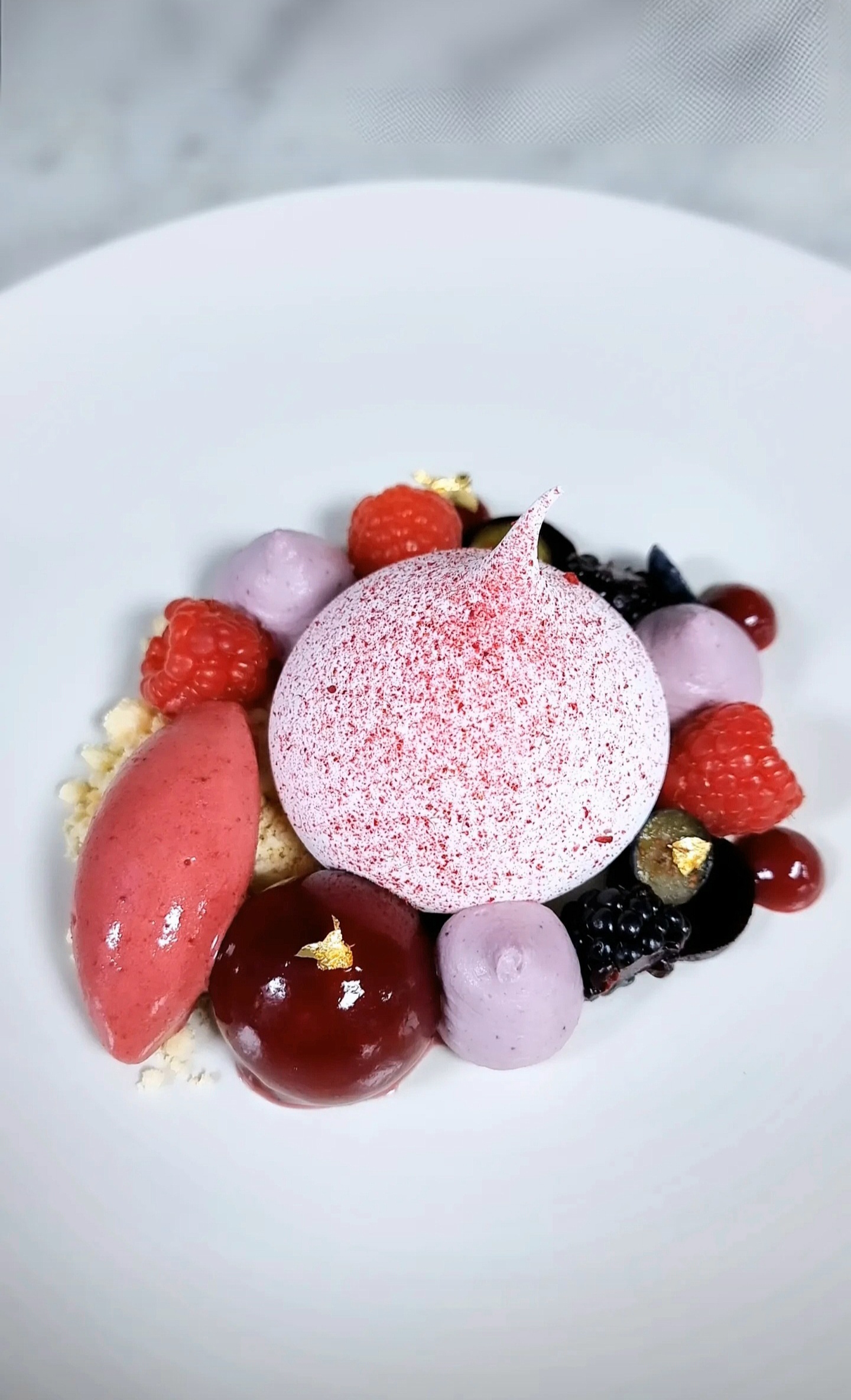
Vacherin
Which is the dish you’ve created that you are most proud of and why?
I’m really proud of my viennoiserie pastries that hold a special place in my heart. What makes this creation particularly significant to me is the combination of personal passion, culinary innovation, and positive reception from customers.
My viennoiseries is a reflection of my culinary journey, combining Italian and French with a touch of innovations. The meticulous balance of flavors, textures, and presentation in these pastry items represents not only my technical skill but also my dedication to pushing the boundaries of traditional cuisine.
Moreover, the positive feedback and appreciation from diners have made a standout in my repertoire. It’s immensely rewarding to see guests savoring each bite and expressing delight in the unique culinary experience.
